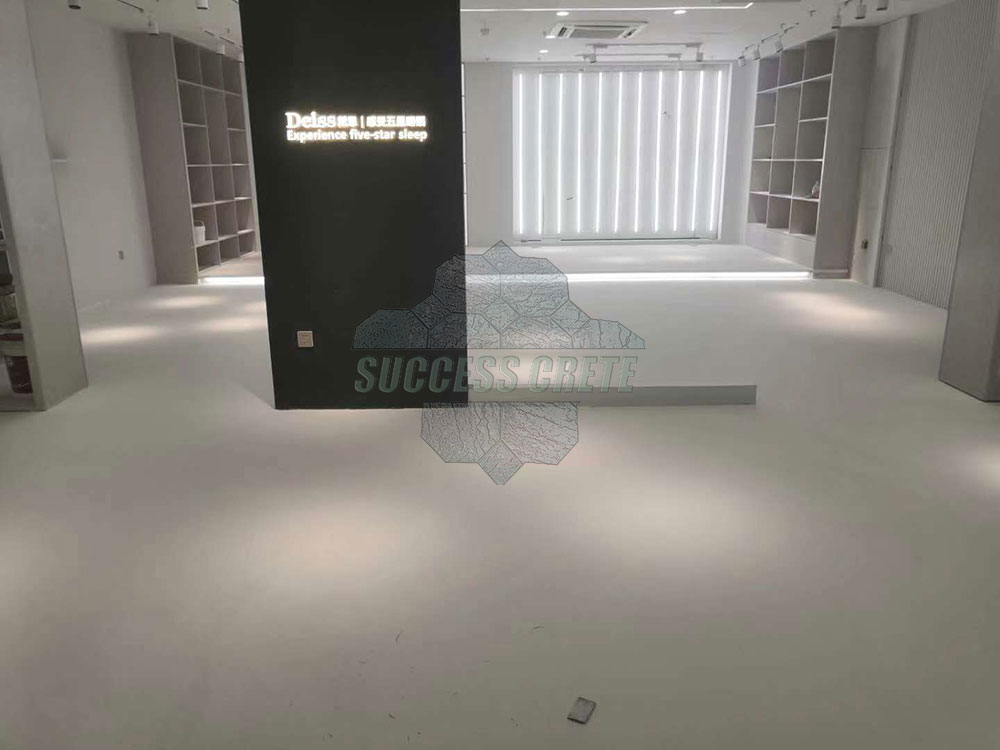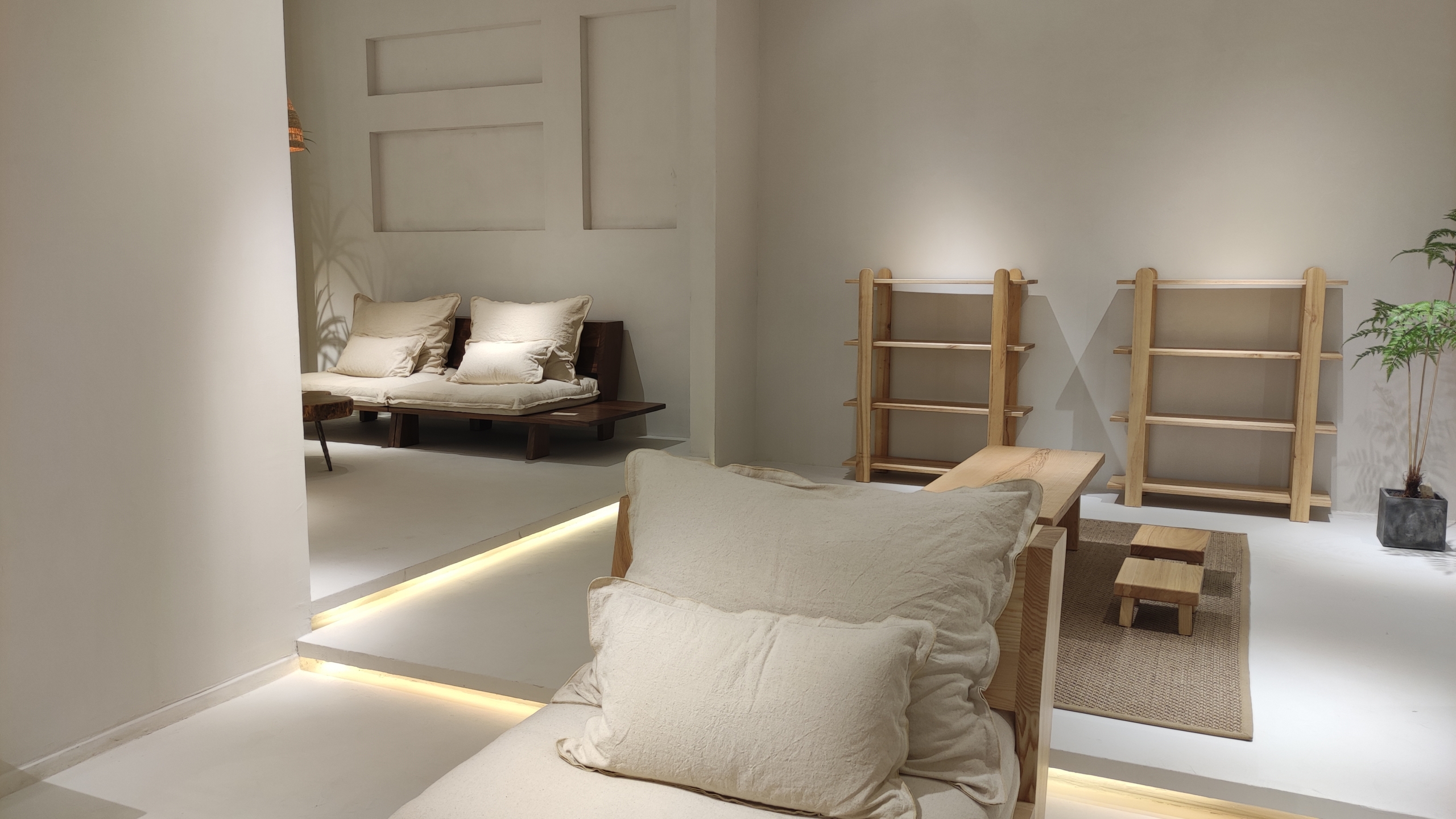Introduction
Self-leveling concrete underlayment is a type of concrete mix designed to be poured over an existing concrete or subfloor surface to create a smooth, level base for the installation of a new flooring system.
Self-leveling concrete underlayment is typically used to correct or level uneven floors, or to create a smooth and level surface for a variety of flooring systems such as tile, hardwood, vinyl, or carpet. It is commonly used in commercial, industrial, and residential applications.
Self-leveling concrete underlayment is a flowable, cement-based product that is typically mixed with water and poured onto the floor surface. It then levels itself out, filling in low spots and smoothing out uneven areas.
The material sets and dries quickly, allowing for the installation of flooring systems within a short period of time.
Self-leveling concrete underlayment is designed to provide a smooth and level surface, but it is not intended to be a structural material.
It is important to follow the manufacturer’s instructions for installation, as improper mixing or application can result in a subpar finish.
Additionally, the surface to be covered must be properly cleaned and prepared before the self-leveling underlayment is poured.
In today’s blog, we will discuss the together:
- What is self-leveling concrete underlayment
- How to install self-leveling concrete underlayment properly
- The advantages of self-leveling concrete underlayment
- Quality products suitable for self leveling concrete underlayment
- How thick should self-leveling underlayment be?

What is self-leveling concrete underlayment?
Self-leveling concrete underlayment is a specialized type of concrete designed to create a smooth, level surface on top of an existing substrate.
It is a thin layer of cement-based mixture that can be poured onto a floor to level out any unevenness or irregularities on the surface.
The underlayment can be used as a base for a variety of flooring materials, including tiles, carpet, hardwood, or laminate flooring.
Here are some subpoints that can provide more details about self-leveling concrete underlayment:
Composition: Self-leveling concrete underlayment is made of cement, water, and other additives that help it flow and self-level. These additives can include polymers, which improve the adhesion, flexibility, and durability of the material. Other additives can provide faster drying times, reduce shrinkage, or improve the resistance to chemicals or moisture.
Application: Self-leveling concrete underlayment is typically mixed with water to form a liquid consistency that can be poured onto the surface. The material is then spread out with a squeegee or a trowel to create a smooth, even layer.
The underlayment can be poured over different types of substrates, such as concrete, wood, or tile, as long as they are clean, stable, and free of cracks or damage. The material can also be applied to vertical surfaces, such as walls, using special techniques and equipment.
Limitations: Self-leveling concrete underlayment has some limitations and considerations that should be taken into account before using it. The material is not suitable for large areas or high-traffic applications, as it may crack or wear out over time. It is also not recommended for outdoor or wet areas, as it may absorb water and become unstable.
Moreover, self-leveling concrete underlayment requires proper preparation, mixing, and installation techniques to ensure a consistent and durable result. Finally, the material may have a limited range of colors or finishes, which may not be suitable for certain design preferences or requirements.
Overall, self-leveling concrete underlayment is a versatile and practical solution for creating a smooth, level surface on top of an existing substrate.
It can provide several benefits and advantages, as long as it is used properly and within its intended scope of application.
How to install self leveling concrete underlayment properly
Self-leveling concrete underlayment is a popular flooring option used to level uneven or damaged floors.
Here are the steps to properly install a self-leveling concrete underlayment:
Prepare the surface: The surface to be covered must be clean, dry, and free from any debris, dirt, or oils. Remove any loose or damaged material, and ensure that the surface is level. Any unevenness in the surface should be addressed before proceeding.
Prime the surface:
Apply a concrete primer to the surface. The primer will help the self-leveling underlayment adhere to the surface and create a strong bond. Allow the primer to dry completely before proceeding.
Mix the self-leveling underlayment:
Follow the manufacturer’s instructions to mix the self-leveling underlayment. Typically, it is mixed with water until it reaches a pourable consistency.
Pour the self-leveling underlayment:
Pour the self-leveling underlayment onto the surface, starting at the farthest corner and working toward the exit. Use a trowel or squeegee to spread the underlayment evenly and eliminate any air bubbles. If necessary, use a gauge rake to achieve the desired thickness.
Level the underlayment:
After the self-leveling underlayment is poured, use a leveling tool, such as a screed board, to level the underlayment. The underlayment should be smooth and level, with no high or low spots.
Allow the underlayment to cure:
Allow the self-leveling underlayment to cure according to the manufacturer’s instructions. Typically, it takes 24 to 48 hours to cure completely.
Install the flooring:
Once the underlayment is cured, you can install the flooring of your choice. Follow the manufacturer’s instructions for installation.
Some additional tips to keep in mind when installing a self-leveling concrete underlayment:
Wear protective gear, such as gloves and safety glasses, when handling the underlayment and other materials.
Mix the underlayment in small batches to ensure that it stays pourable and workable.
Do not overwork the underlayment, as this can cause air bubbles and unevenness.
Keep the room well-ventilated during installation to avoid inhaling fumes from the primer and underlayment.
Follow all safety guidelines and manufacturer’s instructions for the primer and underlayment.
The advantages of self leveling concrete underlayment
Self-leveling concrete underlayment is a popular flooring solution that offers a number of advantages to homeowners and businesses. This type of concrete is often used as an underlayment to create a smooth and level surface for the installation of various types of flooring. Here are some of the advantages of self-leveling concrete underlayment
Easy to install
One of the biggest advantages of self-leveling concrete underlayment is that it is easy to install. Unlike traditional concrete, which requires a lot of time, effort, and expertise to level and smooth, self-leveling concrete underlayment does not require the use of mortar or adhesives, which saves time and labor during installation.
In addition, self-leveling concrete underlayment can be applied over existing floor surfaces such as vinyl or tile. Self-leveling concrete pads can be poured and laid quickly and easily.
This makes it a great choice for DIYers and professional contractors alike.
Creates a level surface
Self-leveling concrete pads are designed to create a smooth and level surface, which is essential for installing various types of flooring such as tile, hardwood, and carpet. Because concrete is self-leveling, it will flow and settle into any low spots, creating a level surface suitable for installing flooring.
Increase the life of your flooring
By creating a smooth, level surface, a self-leveling concrete pad can help increase the life of your flooring. Uneven floors can lead to premature wear and tear, which can lead to costly repairs or replacements. With a self-leveling concrete underlayment, the floor is evenly supported, reducing the risk of damage.
Improves the appearance of the floor
A self-leveling concrete pad can also improve the appearance of the floor. An uneven floor creates unsightly dips and bumps that detract from the overall appearance of the room. With a smooth, flat surface, the floor looks better and is more visually appealing.
Durable and long-lasting
Self-leveling concrete underlayment is a durable and long-lasting flooring solution. It is designed to withstand heavy foot traffic and stand up to wear and tear over time. This makes it an excellent choice for high-traffic areas such as retail stores, schools, and hospitals.
Resistant to moisture and chemicals
Self-leveling concrete pads are also resistant to moisture and chemicals. This makes it ideal for use in areas that come in contact with water or other liquids, such as kitchens and bathrooms. In addition, it can withstand harsh chemicals, such as those used in industrial environments.
All in all, self-leveling concrete padding is an excellent flooring solution that offers a range of benefits to homeowners and businesses. It is easy to install, creates a level surface, increases the life of the floor, and makes the floor stronger.
Quality products suitable for self leveling concrete underlayment
Self-leveling concrete underlayment is a popular choice for creating a smooth and level surface for flooring installations. This material is commonly used in commercial and residential applications and is known for its ease of installation, durability, and versatility.
However, to ensure the best possible results, it is essential to choose high-quality products that are specifically designed for self-leveling underlayment applications.
In this paragraph, we will review some of the top products for self-leveling concrete underlayment in the USA.
ARDEX K 15
ARDEX K 15 is a premium self-leveling underlayment that is widely used in commercial and industrial applications.
This product is known for its excellent flow properties, high compressive strength, and low shrinkage, making it an ideal choice for applications where durability and performance are essential. ARDEX K 15 is also very easy to install and can be applied up to 2 inches in a single pour. It is suitable for use on concrete, wood, and other common substrates.
Mapei Ultraplan 1 Plus
https://www.mapei.com/us/en-us/products-and-solutions/products/detail/ultraplan-1-plus
Mapei Ultraplan 1 Plus is a high-performance self-leveling underlayment that is ideal for use in both commercial and residential applications. This product is formulated with advanced hydraulic binders and special additives that provide excellent flow and leveling properties. It is also fast-setting, with a cure time of just 24 hours, making it an ideal choice for projects with tight timelines. Mapei Ultraplan 1 Plus can be used on a variety of substrates, including concrete, plywood, and OSB.
LATICRETE NXT Level Plus is a premium self-leveling underlayment that is designed for use in high-traffic commercial applications. This product is formulated with advanced self-leveling technology, which allows it to flow and level quickly and easily. It also has a very low shrinkage rate, which helps to minimize cracking and other types of damage over time. LATICRETE NXT Level Plus can be used on a variety of substrates, including concrete, wood, and other common surfaces.
TEC Skill Set Self-Leveling Underlayment
TEC Skill Set Self-Leveling Underlayment is a versatile and high-quality product that is suitable for a wide range of self-leveling underlayment applications. This product is formulated with a blend of Portland cement, polymers, and other high-quality ingredients that provide excellent flow and leveling properties. It is also very easy to install and can be applied up to 1 inch in a single pour. TEC Skill Set Self-Leveling Underlayment is suitable for use on a variety of substrates, including concrete, wood, and other common surfaces.
Sika Level-425 is a fast-setting and high-performance self-leveling underlayment that is ideal for use in commercial and industrial applications. This product is formulated with a blend of special cement, aggregates, and polymers that provide excellent flow and leveling properties. It is also very fast-setting, with a cure time of just 24 hours, making it an ideal choice for projects with tight timelines. Sika Level-425 can be used on a variety of substrates, including concrete, plywood, and OSB.
In conclusion, self-leveling concrete underlayment is an excellent choice for creating a smooth and level surface for flooring installations. However, it is essential to choose high-quality products that are specifically designed for self-leveling underlayment applications. The products listed above are some of the top choices for self-leveling underlayment in the USA and offer excellent performance, durability, and ease of installation.
How thick should self-leveling underlayment be?
Self-leveling underlayment (SLU) is a type of material used to level out uneven or sloped floors. It is commonly used in residential and commercial buildings as a base layer for other flooring materials such as tile, wood, or carpet.
One of the key questions when working with SLU is how thick it should be.
In this paragraph, we will explore the factors that affect the thickness of SLU and provide some general guidelines for determining the appropriate thickness for your project.
Factors that Affect SLU Thickness
The thickness of the SLU that you need will depend on several factors, including the condition of the subfloor, the type of flooring material you plan to install, and the level of traffic the floor will receive. Here are some of the key factors to consider:
Subfloor Condition:
If your subfloor is relatively smooth and level, you may only need a thin layer of SLU to create a perfectly flat surface. However, if your subfloor is very uneven or has large cracks or gaps, you may need a thicker layer of SLU to ensure that the final floor is level.
Flooring Material:
Different flooring materials have different thickness requirements for their base layer. For example, tile may require a thicker SLU layer than wood flooring because it needs a more solid and stable base.
Traffic Level:
The thickness of the SLU also depends on how much traffic the floor will receive. If the floor will be subject to heavy foot traffic or machinery, you may need a thicker layer to ensure that it can withstand the weight.
General Guidelines for SLU Thickness
While the thickness of SLU will vary based on the factors mentioned above, there are some general guidelines that you can follow to determine the appropriate thickness for your project. Here are some examples:
For Residential Floors: For most residential applications, a 1/4 inch to 1/2 inch layer of SLU should be sufficient. However, if the subfloor is extremely uneven or if you plan to install large-format tile, you may need a thicker layer.
For Commercial Floors: Commercial applications typically require a thicker layer of SLU, typically between 1/2 inch to 1 inch. This is because commercial floors typically receive heavier traffic and need a more durable base layer.
Large-Format Tile: Large-format tile is becoming increasingly popular in both residential and commercial applications. For these installations, a thicker layer of SLU may be required to ensure that the floor is perfectly flat and that the tiles do not crack or buckle.
Determining the appropriate thickness for self-leveling underlayment is an important step in any flooring project.
While the thickness will vary based on a variety of factors, including the condition of the subfloor, the type of flooring material, and the level of traffic, following general guidelines can help ensure that your final floor is level and durable.
When in doubt, consult with a professional flooring installer to determine the best approach for your project.

Conclusion
Working with self-leveling concrete underlayment can be a great option for creating a smooth and level surface on a variety of substrates, such as concrete, wood, or tile. It is important to prepare the substrate properly, including cleaning and priming, to ensure proper adhesion and performance of the underlayment.
When mixing the underlayment, it is important to follow the manufacturer’s instructions carefully and use the appropriate tools, such as a drill with a mixing paddle, to achieve a consistent and smooth mixture.
During the application process, it is important to work quickly and efficiently to spread the underlayment evenly and avoid any high or low spots.
After the underlayment is applied, it is important to allow it to cure properly before installing any finished flooring or other materials on top.
This may require several days of drying time, depending on the specific product and environmental conditions.
Overall, working with self-leveling concrete underlayment can be a cost-effective and efficient way to create a level surface for a variety of applications, but it is important to follow the manufacturer’s instructions carefully and take the necessary precautions to ensure proper performance and results.






